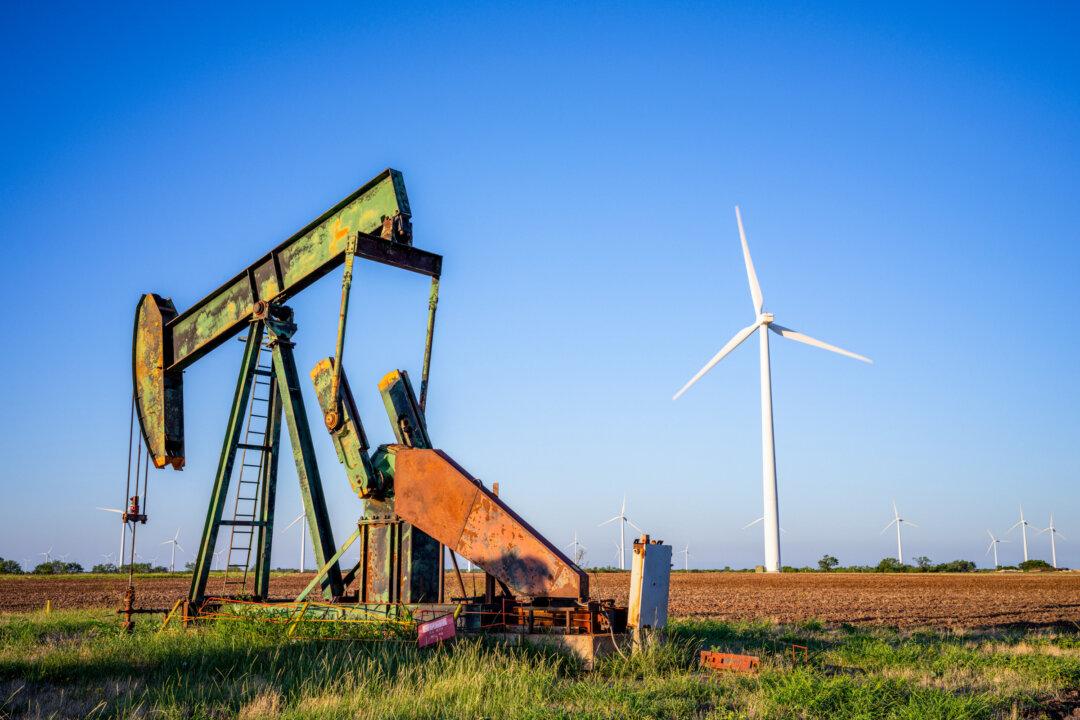The U.S. Environmental Protection Agency (EPA) has issued a methane emissions rule that levies a first-ever “Waste Emissions Charge” on oil and gas producers starting at $900 per metric ton of emissions this calendar year before rising to $1,500 per emitted ton in 2026.
On Nov. 11, Trump named former Rep. Lee Zeldin (R-N.Y.) to lead the EPA, where he is expected to target the methane rule, created with 2022’s adoption of the Inflation Reduction Act (IRA), and other regulations within a wide range of federal environmental and land-use laws.
These include the Clean Air Act, the Clean Water Act, the Endangered Species Act, and the National Environmental Policy Act (NEPA).
The waste emission charge is the last piece of legislative intent to be codified in the IRA, which along with 2021’s Bipartisan Infrastructure Law and the CHIPS & Science Act were pushed by President Joe Biden as keys to his 2035 decarbonized power grid and 2050 decarbonized economy goals.
The EPA’s announcement during the second day of COP29 coincides with the conference’s emphasis on methane emissions. The U.S.—under Biden—is a key signatory and sponsor of the Global Methane Pledge, a voluntary pact signed by more than 100 countries to cut global methane emissions by 30 percent by 2030.
Under the IRA, companies that emit methane beyond 25,000 metric tons of carbon dioxide annually must pay $900 per metric ton this year, $1,200 in 2025, and $1,500 in 2026 and beyond.
According to the EPA, methane is a “super pollutant” greenhouse gas with “global warming potential” that is 28 times greater than carbon dioxide in warming the Earth’s atmosphere. Oil and gas producers emit methane, a primary component in natural gas, while drilling and processing crude oil into fuel, the agency says.
“The final Waste Emissions Charge is the latest in a series of actions under President Biden’s methane strategy to improve efficiency in the oil and gas sector, support American jobs, protect clean air, and reinforce U.S. leadership on the global stage,” EPA Administrator Michael S. Regan said in a statement accompanying the announcement.
“EPA has been engaging with industry, states, and communities to reduce methane emissions so that natural gas ultimately makes it to consumers as usable fuel—instead of as a harmful greenhouse gas,” Regan stated.
“Along with EPA’s complementary set of technology standards and historic financial and technical resources under the Inflation Reduction Act, today’s action ensures that America continues to lead in deploying technologies and innovations that lower our emissions.”
Biden’s decarbonization goals and the IRA’s clean energy regulations are not expected to remain government policy, with Trump vowing to undo many in “day one” executive orders.
These include a directive withdrawing the United States from the Paris Climate Accords, which the U.N. Climate Conference has adopted, as he did after his January 2017 inauguration.

Repealing the methane, or greenhouse gas, emission fee, however, will require congressional action.
Critics: Deregulate Ideology
The methane rule was opposed by domestic oil and gas producers. On April 23, a field hearing, ‘Drilling Down: Oversight of the Challenges and Opportunities Facing U.S. Energy Production, was held in Plano, Texas, before the House Oversight and Accountability Committee’s subcommittee on economic growth, energy policy and regulatory affairs.Denver-based Liberty Energy Inc. President Ron Gusek spelled out a litany of concerns with the EPA’s methane rules.
While section 111 of the rule states that “existing sources would be grandfathered into the regulatory scheme,” exempted producers still had to meet the same standards under the same criteria, making it an all-inclusive, non-exemption rule, Gusek said.
“By implementing nearly identical standards for existing sources, EPA’s rule changes the financial projections that allowed those existing sources to be opened in the first place, likely rendering many operations unprofitable and forcing them to shut down,” he said, noting that in 2020 the EPA estimated the “social cost” of emitted methane to be $1,600 per metric ton.
“To justify this enormous expense, EPA used a new and never-subject-to-public-comment value” in assessing what exactly is the “social cost of methane,” Gusek said. “This and EPA’s other ‘social costs’ of carbon are based on dubious science, and have the appearance of being developed for the sole purpose of justifying regulations like this one.”
Rep. Brett Guthrie (R-Ky.), among leading candidates to succeed the retiring Rep. Cathy McMorris Rodgers (R-Wash.) as House Energy and Commerce Committee chair, has called Biden’s “Green New Deal” bills “radical” solutions driven more by ideology than science.
“The ‘Green New Deal’ is projected to cost up to $93 trillion over 10 years, at an estimated cost of over $60,000 per year per household. I believe that we need innovative and market-based solutions to combat climate change,” states Guthrie, who chairs the House Energy and Commerce Committee’s subcommittee on health.
Guthrie and Rep. Morgan Griffith (R-Va.), who chairs the oversight and investigations subcommittee of the House Energy and Commerce Committee, wrote in a joint Oct. 15 Washington Reporter op-ed that they’d work in the coming session—assuming their since-clinched reelections—to extract what they regard as reasonable rules from those now adopted by the EPA.
“The EPA’s command and control regime in the name of ‘climate justice’ is being used to tax American households and fulfill a far-left ‘Green New Deal’ agenda,” they wrote.







